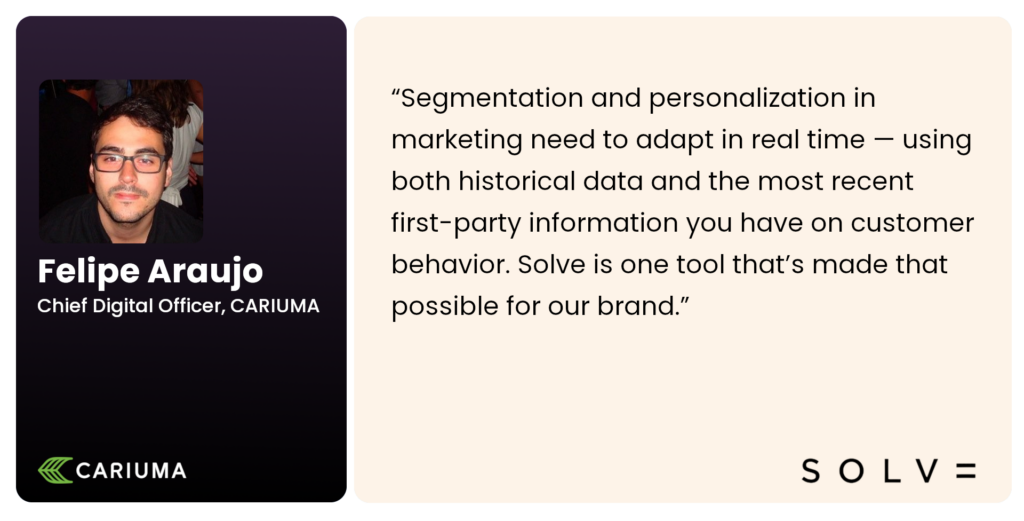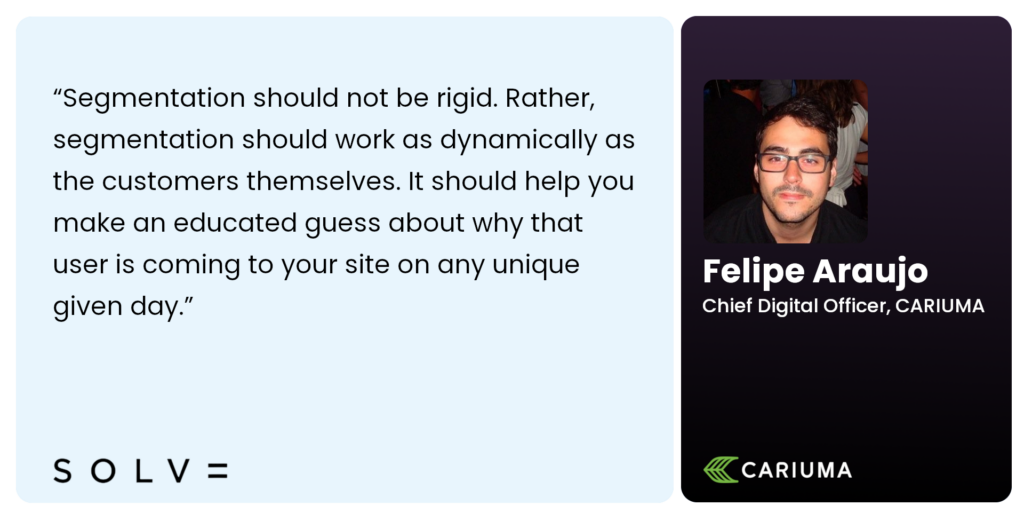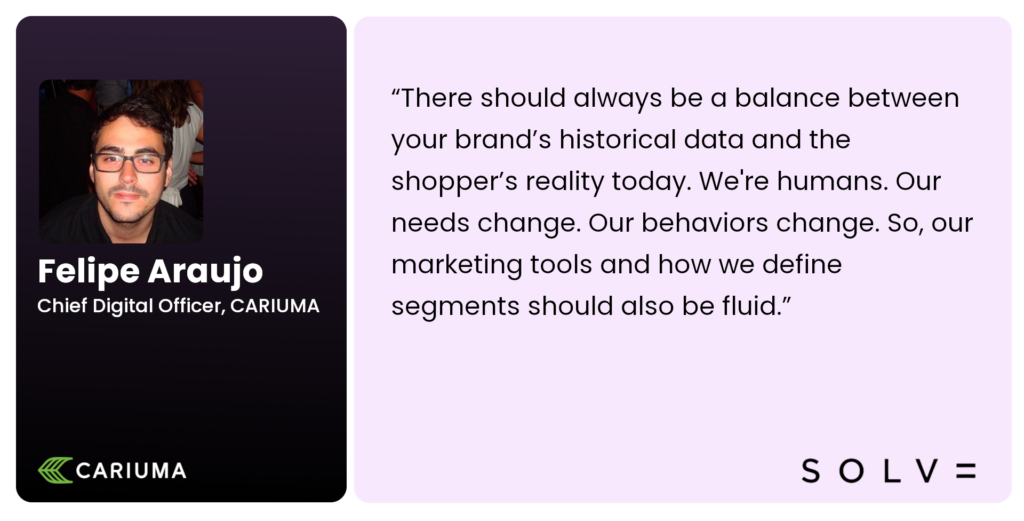With the introduction of intensive privacy laws and iOS 14.5, brands must adapt to the changing data landscape to continue winning customers.
That’s why we sat down with Felipe Araujo, Chief Digital Officer at CARIUMA. He’s responsible for the sustainable sneaker brand’s revenue growth, digital experience, and customer touchpoints ranging from paid ads to owned emails. This strategy has given Felipe unique insights into the power of first-party data in effective customer segmentation.
Below, he dives into his tips and tactics with the Solve team.
Segmentation must adapt dynamically
Customer segmentation is the process of dividing your customers into group profiles based on historical information about the user, including:
- Past purchases
- Survey responses
- How they found your site
It’s a useful way to implement marketing strategies based on each unique customer’s interests. However, Felipe points out that companies shouldn’t forget that customers aren’t statistics — they’re dynamic individuals. That requires far more thoughtful personalization.
- For instance, you may have identified a shopper as a woman buying shoes for herself and then advertise to her accordingly.
- However, she may also visit your store to buy shoes as a gift for her husband or father.
That reality indicates how segmentation must adapt dynamically, influenced by both historical and real-time behavioral data.
On this front, CARIUMA leverages Solve’s eCommerce data solution to make those real-time configurations. By taking advantage of the first-party data they already fully own, CARIUMA can proactively course-correct — sending that aforementioned shopper email sequences about Father’s Day promotions, as opposed to just email sequences for female customers.
Ultimately, segmentation should not be rigid. Avoid any hard lines around what you believe about your customer. Instead, utilize tools that adapt cleverly to the fluidity of human behavior.
Third-party data is costly and incomplete
According to Felipe, relying solely on third-party platform data for customer outreach will not end well for your brand. Here’s an example:
- A brand pays for an impression, which then leads a user to become site traffic.
- However, that brand will eventually have to pay again to bring that user back to their website.
- Down the line, they’ve likely repeated this cycle (up to 7x or more).
Conversely, when you own your data, you reduce your dependency on that cycle of continuously paying to capture and then bring back users.
Instead, you’re stretching a single traffic session to make it more valuable:
- You pay once for a customer’s first visit to your site.
- You identify them and their various behaviors, which become first-party data points.
- Finally, you transition them to email flows and comms via other platforms.
Realistically, brands will always pay for traffic to a certain degree because a 360° marketing approach is key. At the same time, first-party data is a major value-add and diversifies your overall strategy — reducing your reliance on infinitely paying for traffic.
As a result, you squeeze more value out of the traffic you acquire and increase total marketing efficiency.



Previous Next